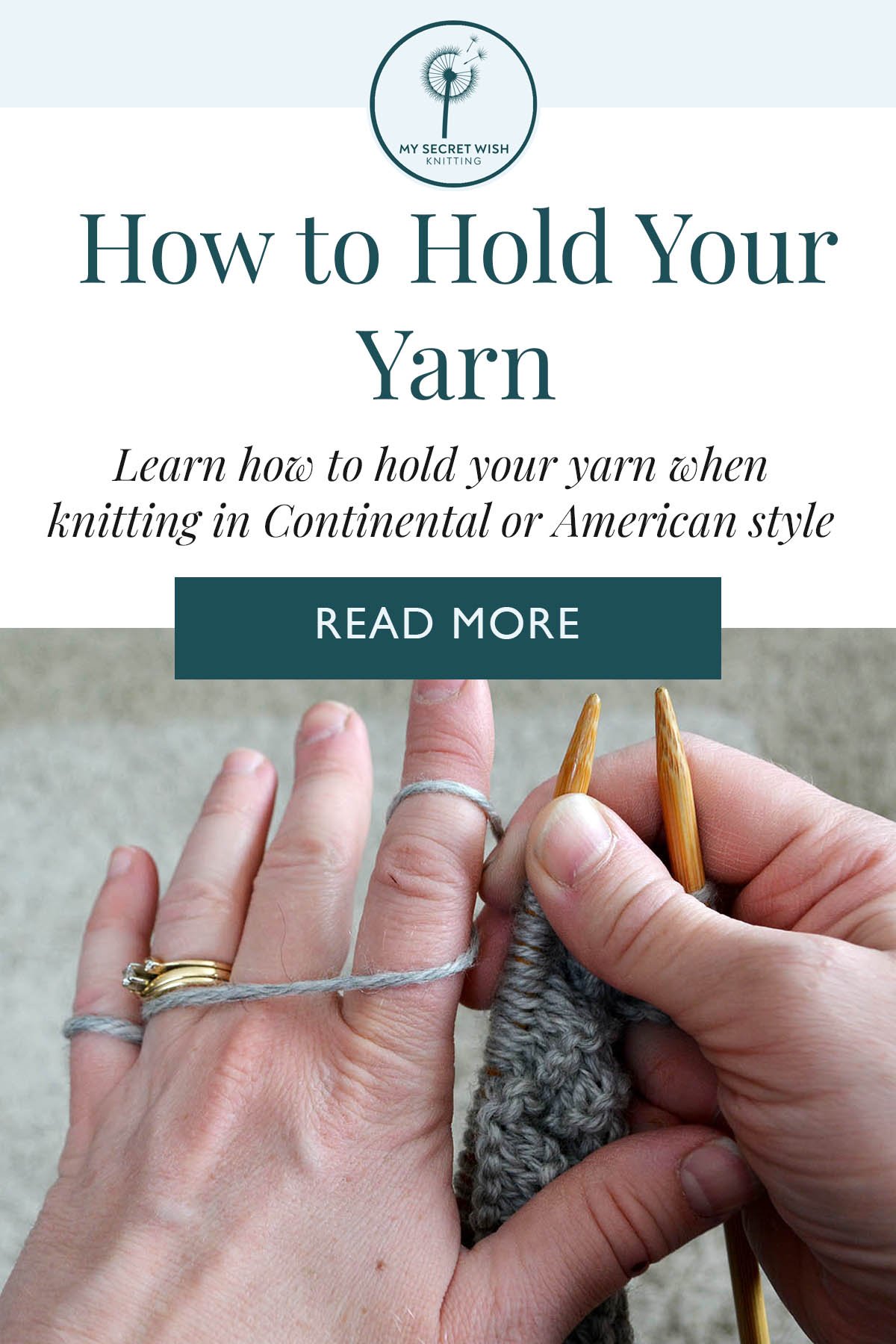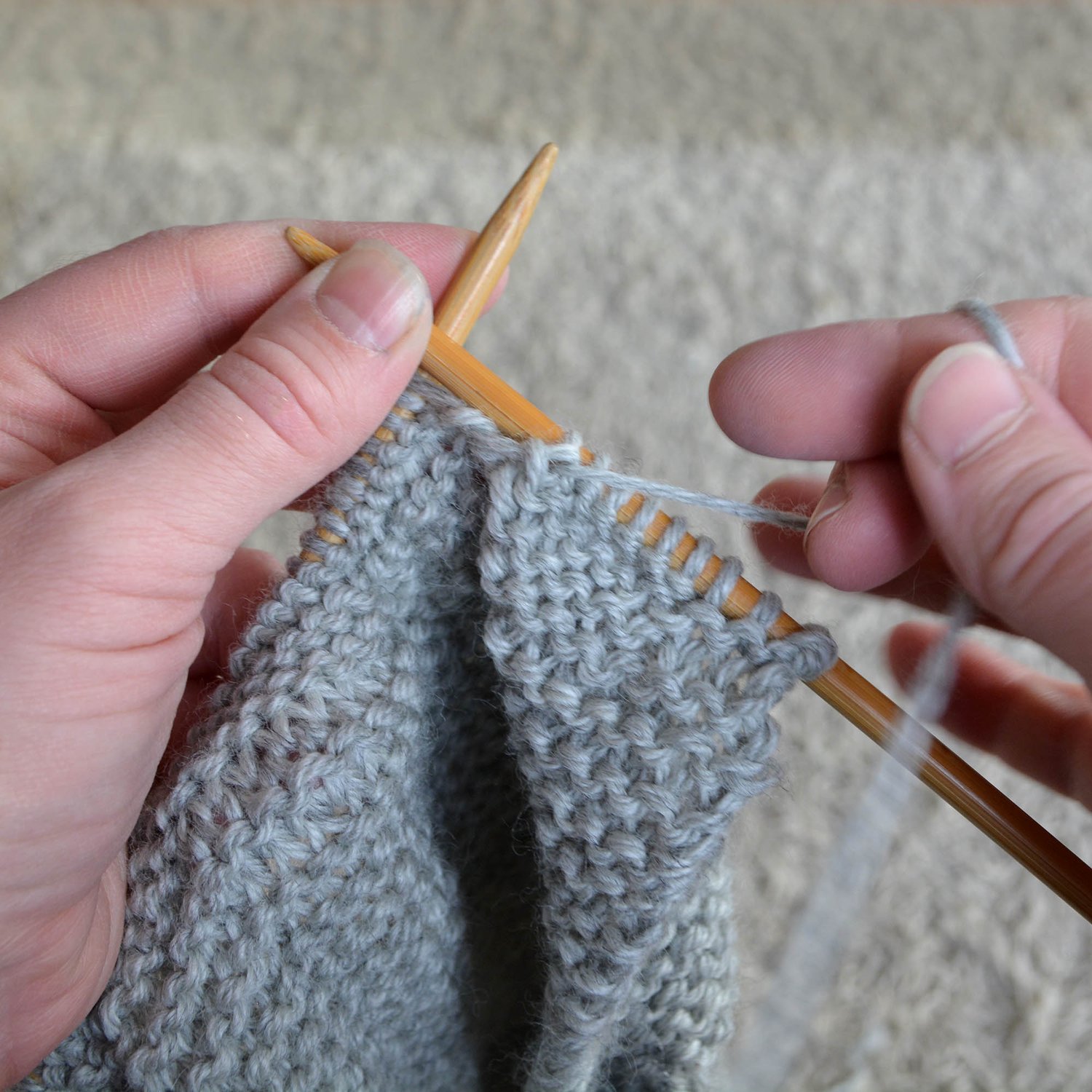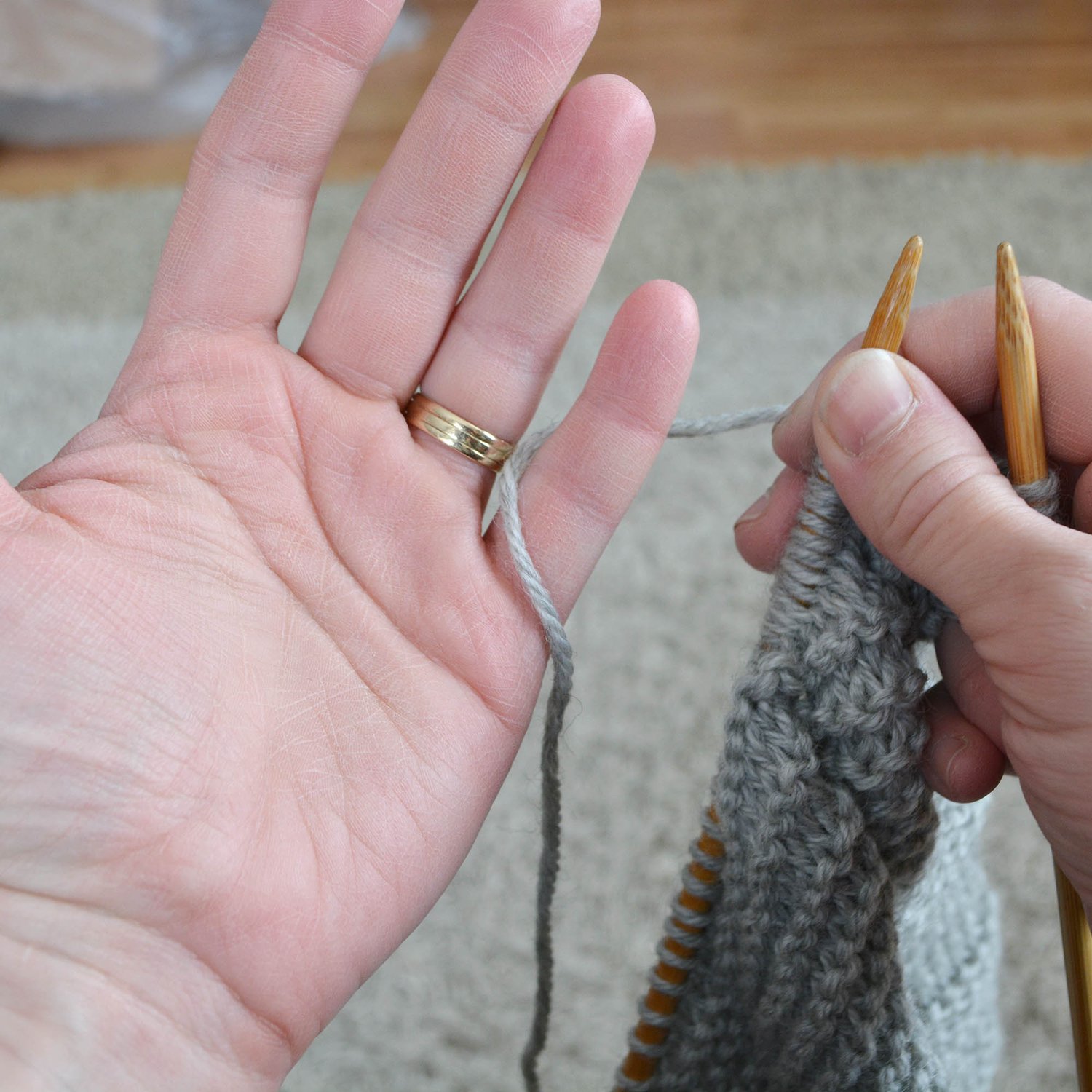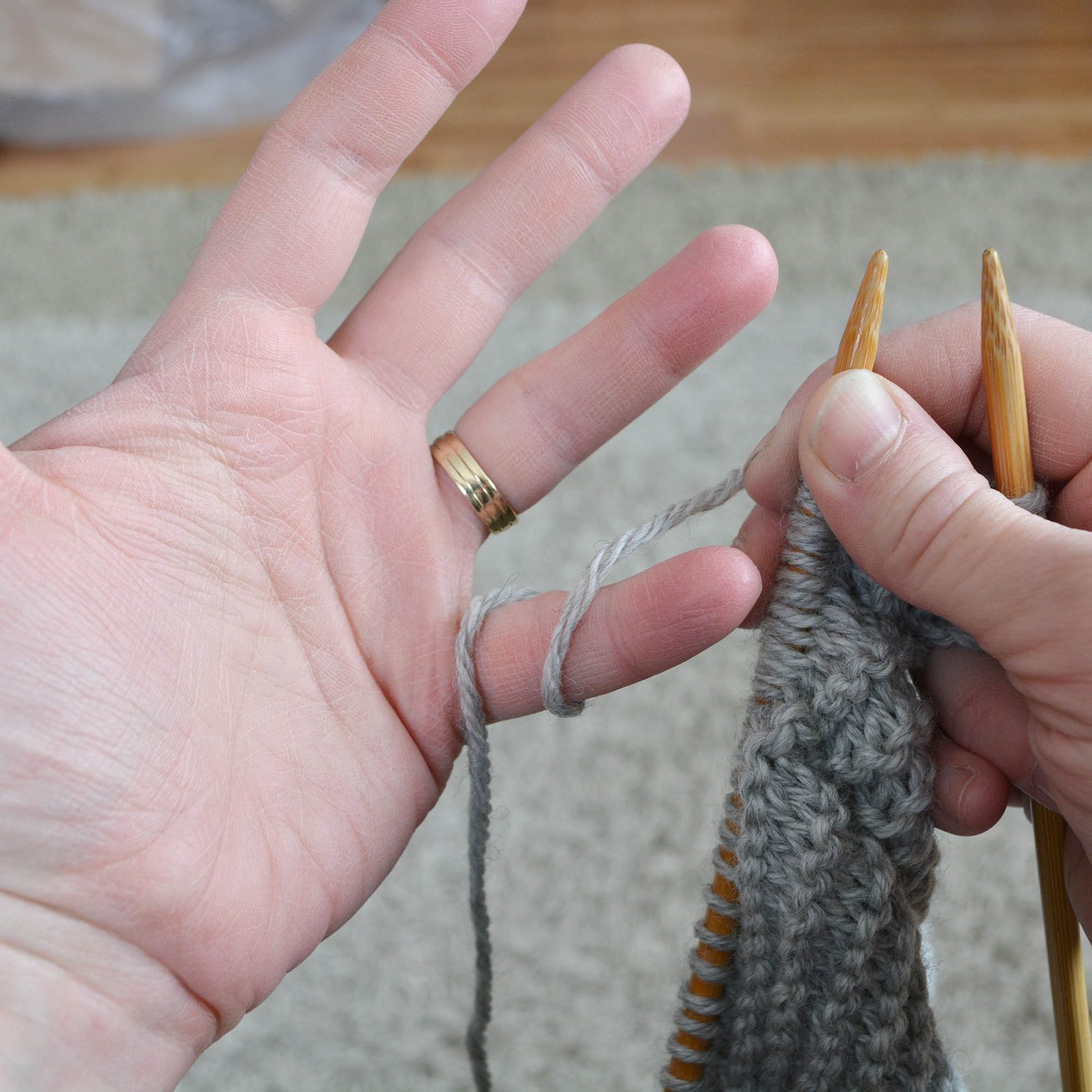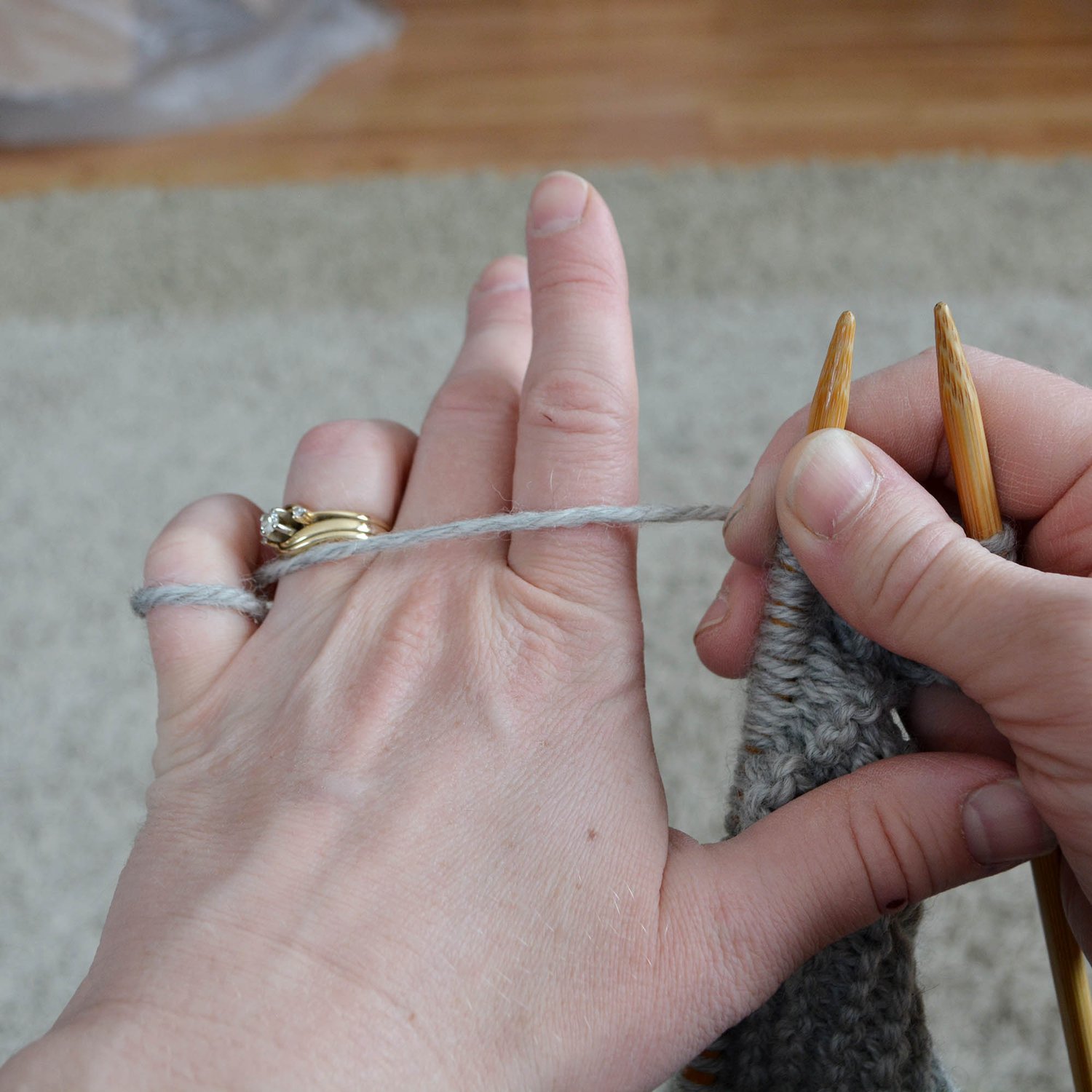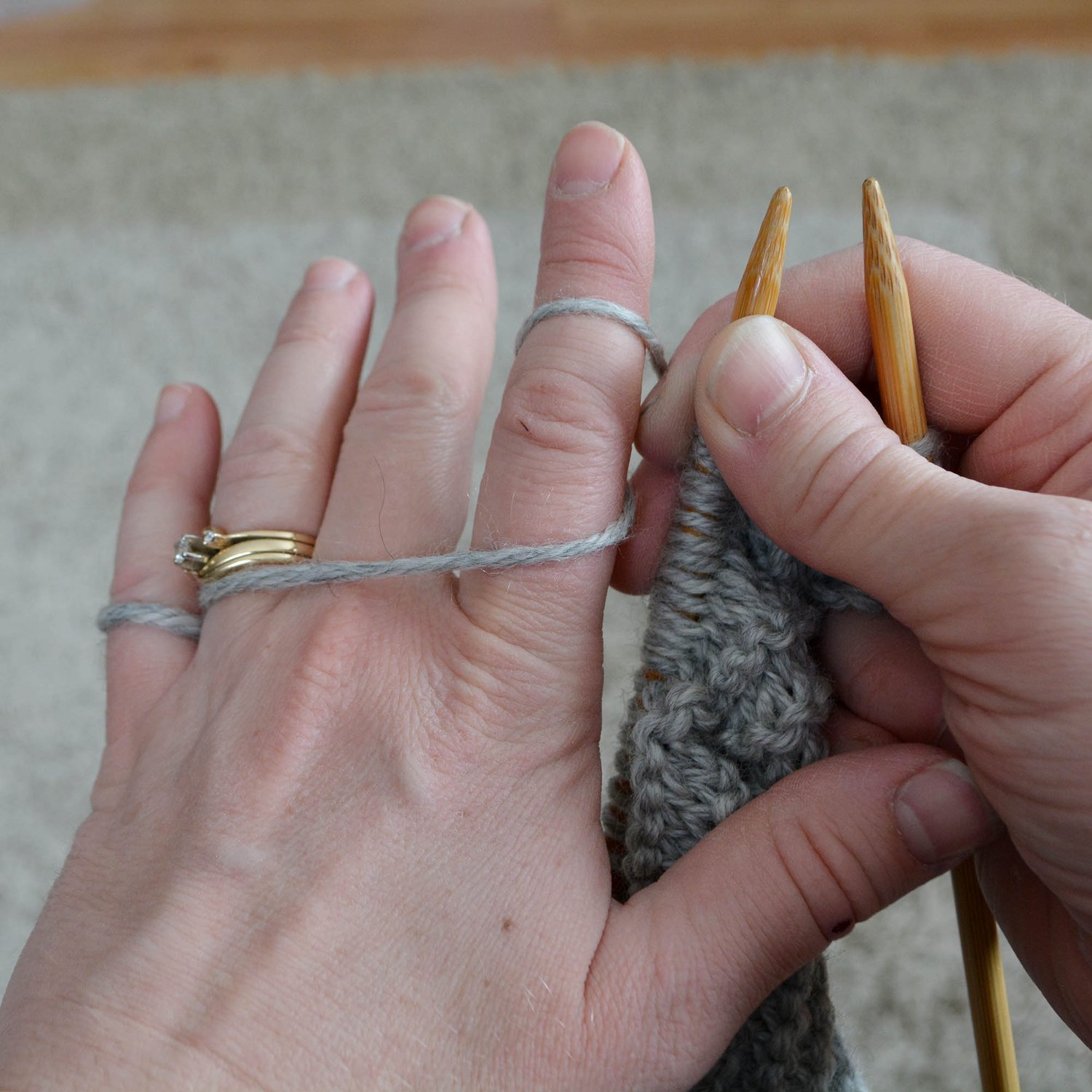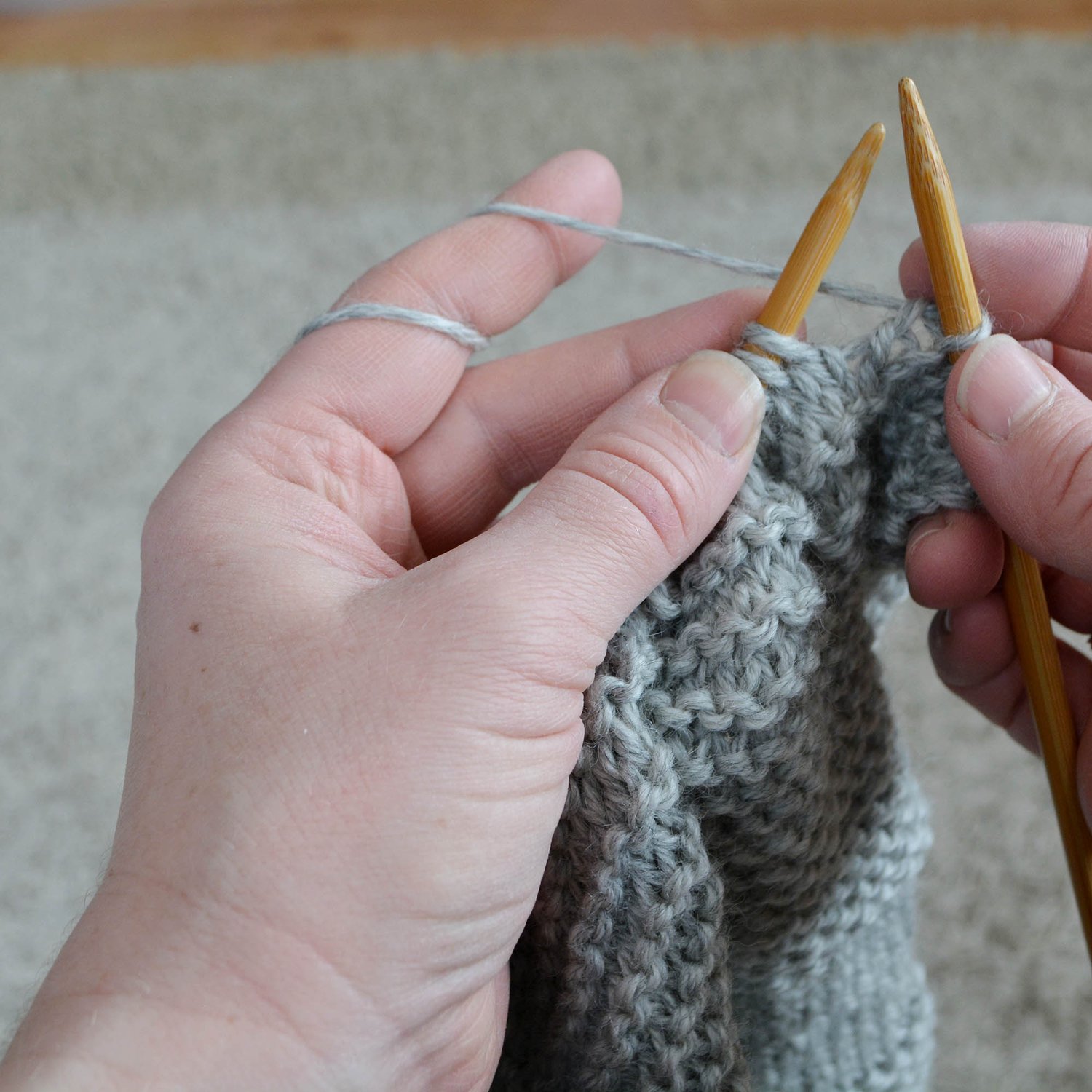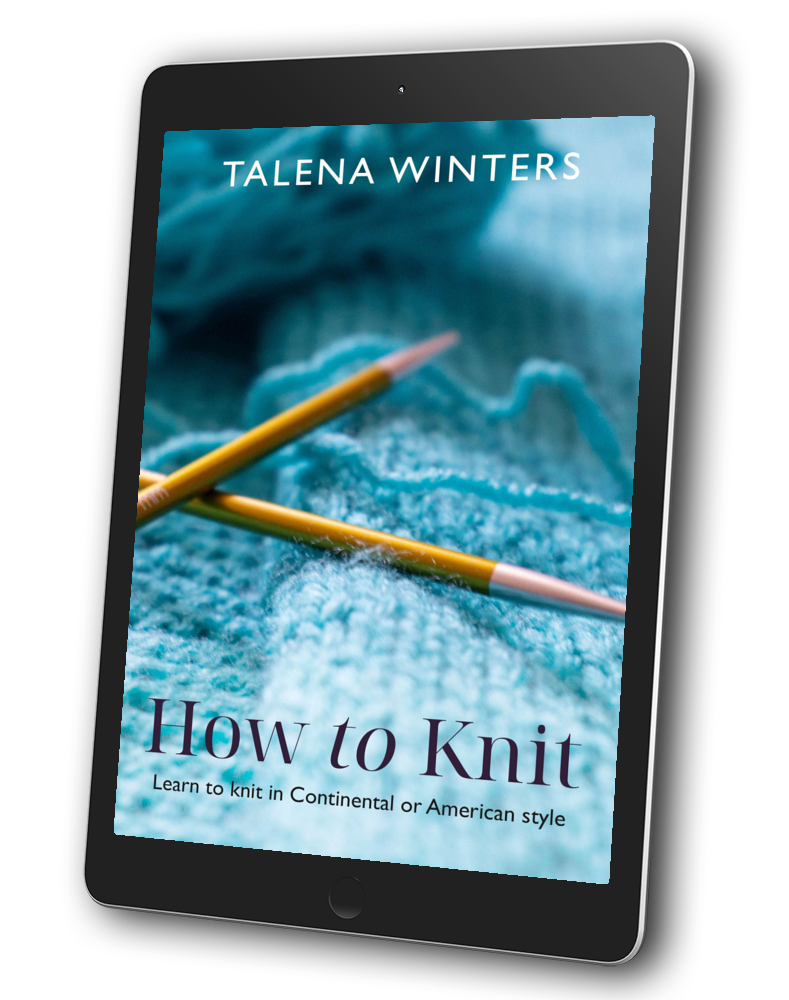
Holding the Yarn
How to hold your yarn when knitting.
Adapted from How to Knit Lesson Five. Get the complete tutorial at the link below.

How to hold your yarn when knitting.
Adapted from How to Knit Lesson Five. Get the complete tutorial at the link below.
There are two main ways to hold your yarn while knitting. Knitters tend to naturally gravitate toward one or the other, but with practice, both styles can be done quickly and produce the same results.
Holding your working yarn in the non-dominant hand is called Continental (or European)-style knitting, and requires less hand movement. Holding it in the dominant hand is called American (or English)-style knitting.
In knitting lingo, American style is sometimes called throwing because of how you have to throw the yarn around the needle to create a new stitch, and Continental is called picking, since all you need to do to grab the new yarn is pick it up with a small needle movement.
Which one should you choose? The difference is mostly personal preference. Picking is easier on the joints and hands and can be done much faster once you’re proficient, which is why if you’re learning to knit for the first time, I recommend you try Continental style first.
Continental style does require you to pay more attention to how you’re holding your yarn, as you'll see below. So if you start with Continental style and it keeps tripping you up—say, you find it tricky to keep your tension correct or master the motions required—or if you’re dusting off your skills and were taught American style originally, start with American.
In the knitting community, the battle of throwing versus picking rages on, but all in good fun, and truly—it’s up to you, the knitter, to determine which is best and most comfortable for you. As you become more experienced, you will sometimes even find reason to use both on the same project (as in when working two colours in stranded knitting).
👉 Note: You’ll likely need to refer to this tutorial regularly until holding your yarn correctly becomes second nature, so be sure to bookmark it.
The first important thing to learn when you knit is how to keep good tension on your working yarn. Keeping good tension makes it easier to form stitches, and the resulting stitches are more even. Poor tension makes knitting difficult and frustrating, and the results are often shoddy-looking.
Good tension is created by always keeping your working yarn taut. If you’re having trouble forming stitches, this is usually one of the main culprits.
How you keep your yarn taut will be determined by your style of knitting, or in which hand you are holding your working yarn.
American knitting holds the yarn in the dominant hand.
The way you hold your yarn for American-style knitting isn’t too important, as the tension is made by pulling on the yarn with the dominant hand after it has been looped around the needle. You'll see what I mean when we get to the nitty-gritty of knitting in this style.
However, the basic idea is that you’ll need to wrap the working yarn around the fingers on your dominant hand in such a way as to allow yarn to smoothly and easily travel around them while providing some resistance and keeping the yarn handy so it won’t drop.
Find a wrap method that feels comfortable to you and allows for deft maneuvering of the yarn as you knit. The image below shows one option, with the yarn weaving between the middle and index fingers and being anchored with the thumb.
Yarn held in the dominant hand for American-style knitting.
Continental knitting holds the yarn in the non-dominant hand.
For this style of knitting, your non-dominant hand is treated like a guide and spindle, like the spindle that holds a spool of thread on a sewing machine. Your fingers and hand give the yarn a path to travel toward your work that moves it where it needs to be when it needs to be there while providing the resistance you need for proper tension. Your index finger is the spindle that adjust tension on the fly.
If you’re a crocheter, you likely already hold your working yarn in your non-dominant hand. The same method ought to work for knitting in Continental Style.
You don’t need to wrap your hand exactly the way I do, but it’s important that however you wrap the yarn, it keeps a firm tension on the working yarn while allowing it to slide smoothly over the hand.
Refer to the photo tutorial below for how to hold your yarn in Continental-Style knitting.
Images are demonstrated by a right-handed person. Written instructions are non-hand specific.
With the palm of your non-dominant hand up, trail the ball end of the yarn down over the pinky finger toward the outside of the hand, then move the project end of the yarn between your pinky and ring fingers toward the back of your hand.
Rotate your non-dominant wrist to wrap the yarn around the pinky finger once, finishing with the working (project) end going between the ring and pinky fingers toward the back of the hand.
Keeping the working yarn at the back of your non-dominant hand, flip the hand over so the yarn between your pinky finger and your project is laying across the back of the first three fingers on the hand (toward the thumb).
Rotate your non-dominant wrist to wrap the yarn once around your index finger so the yarn travels from the pinky, across the back of the index finger, down toward the palm, then up between the index and middle fingers before travelling across the back of the index finger toward your project.
Hold the work with both hands, keeping the non-dominant index finger straight away from your wrist and using the other fingers to hold the work. The yarn should be travelling from your project on the working needle (unless you’re at the beginning of a row, in which case it will be coming from the working needle) toward your non-dominant index finger and continue on around your hand as described. The yarn should not be loose or tight.
To keep proper tension, maintain a distance of approximately two inches (five centimetres) between the needles and your index finger. Keep the index finger straight up in the air to keep tension on the yarn at all times. (You’ll need to practice this. Think of it like a spindle guiding the yarn that must always be kept stiff.)
Return to How to Knit index:

Hi! I’m Talena Winters (a.k.a. the Yarn Mermaid).
I started My Secret Wish Knitting in 2010 to empower and delight knitting heroes like you who want to elevate your knitting and make magic with yarn. When I’m not concocting new yarn potion recipes, I’m creating story magic as a fantasy and romance author and fiction editor (at talenawinters.com). I live with my family and pets in the Peace Country of northern Alberta, Canada, where sweater weather lasts at least nine months a year and my closest neighbours are bears and wood nymphs.
This website is a labour of love by a team of one (me!). If you found value here, please support the effort by purchasing a pattern. If you want more knitting magic, check out my community events and newsletter in the Knitting Circle. We’d love to have you!

